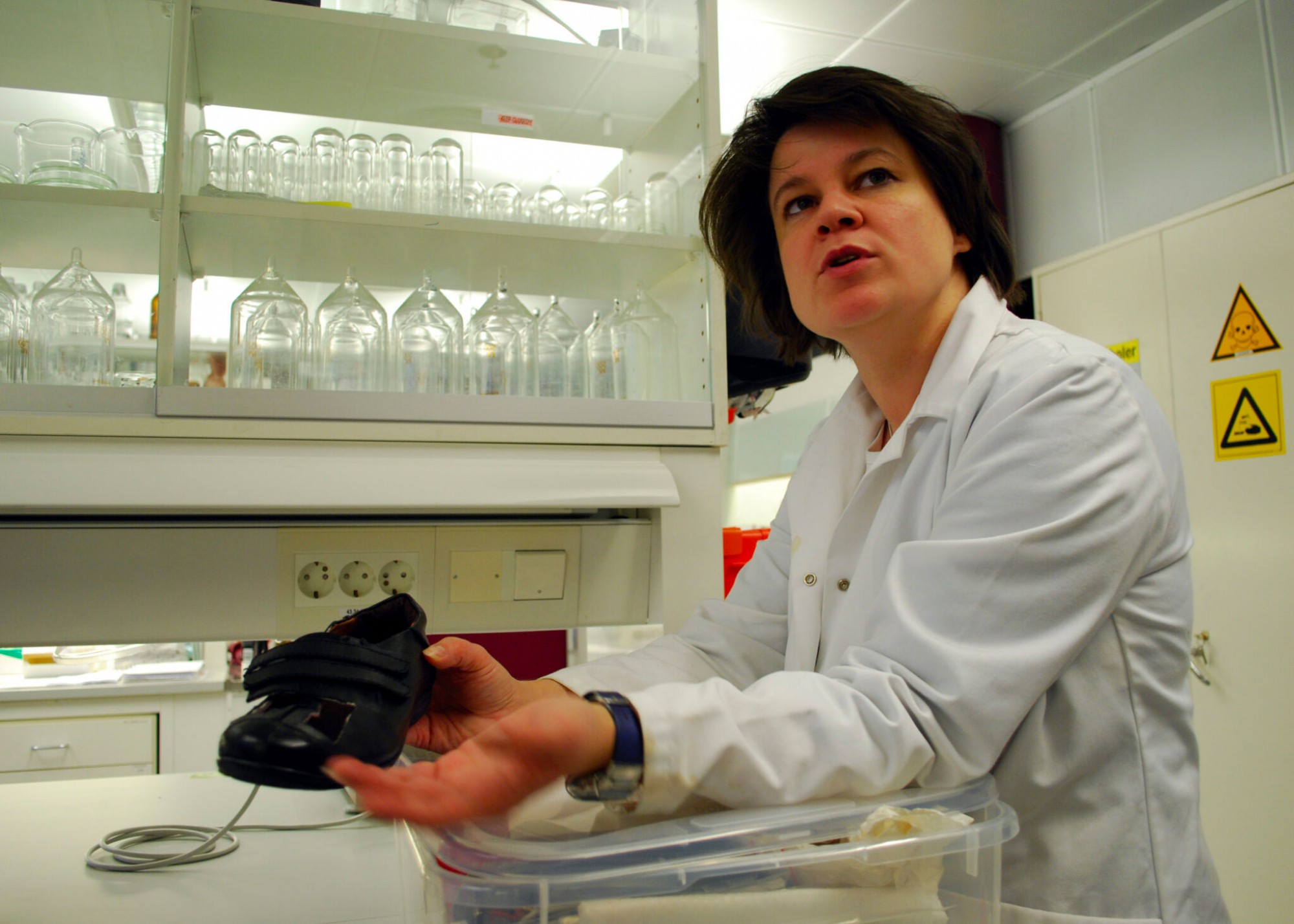
Profile 2019: A woman of action
By: Christine Kristoffersen Hanssen (text) and Helge M. Markusson (photo)
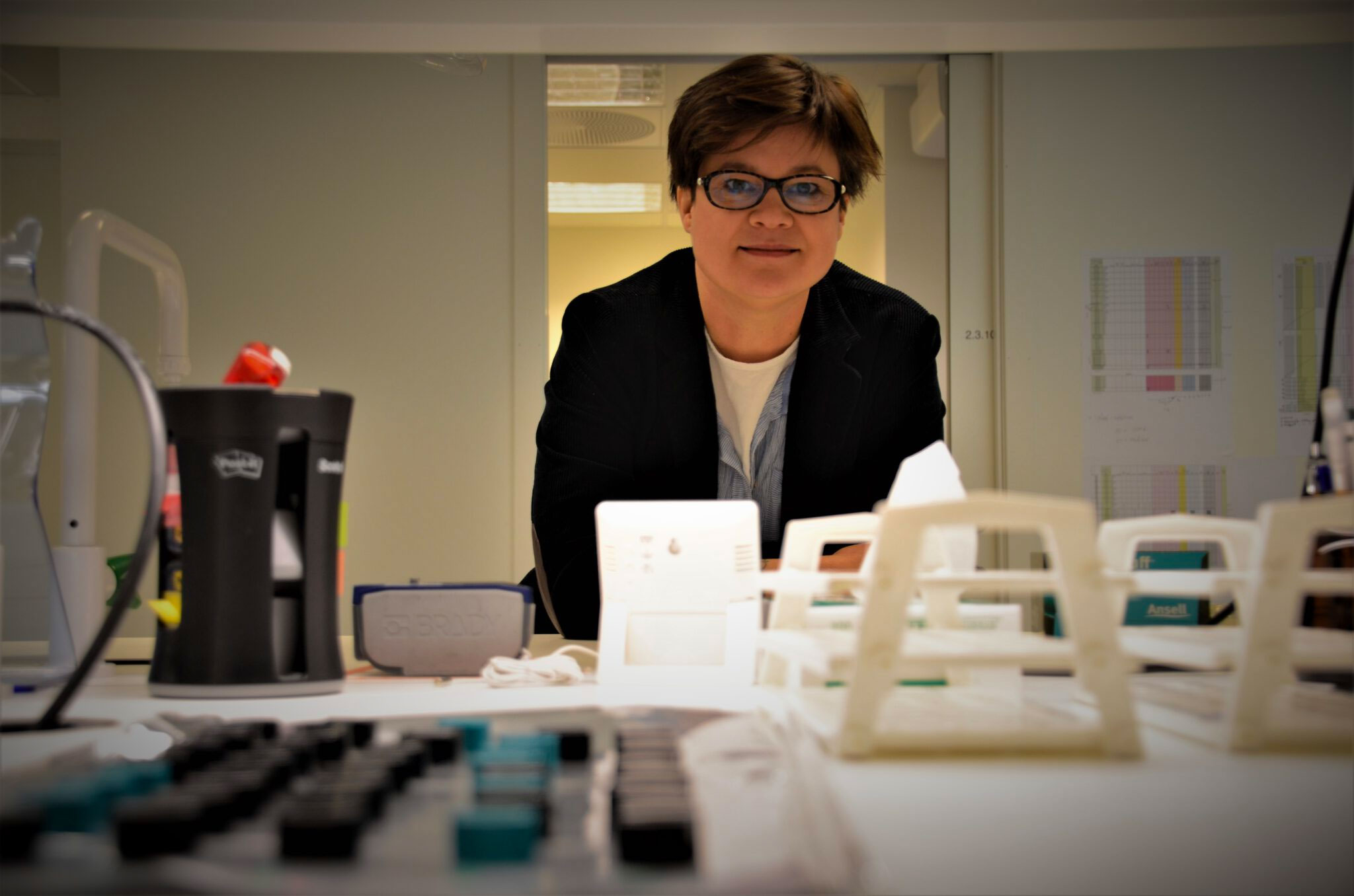
1.
“Everything is happening at breakneck speed. The environmental changes in just the past twenty or thirty years in the Arctic have been enormous.”
Dorte Herzke taps the end of a blue ballpoint pen on her desk.
“If we look at the number of chemicals produced, the quantities released into nature, what the poisons do to us and what they’re doing to the environment, it’s obvious this can’t continue for twenty or thirty more years.”
The tapping on her desktop accelerates.
“In other words, we’re in a hurry. A great hurry. But to figure out what we need to do to turn these developments around, we have to look at the big picture and understand how things fit together.”
A believer in applied research
This focus on the big picture and her eagerness to find measures that actually work are recurring themes in Herzke’s career. When all the other students in her Chemistry class at the University of Berlin intended to go into basic research, Herzke decided to join the Institute for Water, Soil and Air Hygiene in West Berlin.
“I had no desire to disappear into a lab for three years and re-emerge with a chemical substance no one had heard of and no one had any use for. I’ve always considered applied research to be more important. That, and acquiring knowledge that can be used for something worthwhile.”
ADVERTISEMENT
Herzke completed a PhD in Analytical Chemistry in 1998. And what led her to Tromsø? She says it was a combination of coincidence and luck.
“There aren’t many openings for analytical/environmental chemists in Germany, so I both wanted to leave the country and had to. Right before I finished my PhD, I participated in a conference where I spoke with a guy who worked in the same field as me, but in Norway. I said he should keep me in mind if a job opportunity should crop up there,” says Herzke, adding: “And luckily he did!”
Chemist father
Herzke completed a PhD in Analytical Chemistry in 1998. And what led her to Tromsø? She says it was a combination of coincidence and luck.
“There aren’t many openings for analytical/environmental chemists in Germany, so I both wanted to leave the country and had to. Right before I finished my PhD, I participated in a conference where I spoke with a guy who worked in the same field as me, but in Norway. I said he should keep me in mind if a job opportunity should crop up there,” says Herzke, adding: “And luckily he did!”
Herzke’s curiosity about chemistry, nature and the environment was piqued when she was still a child in Berlin. Her father should probably take a lot of credit for her career choice; he is also a chemist.
“He never said, now we are going to talk about chemistry, but whenever we were hiking or exploring, he would draw our attention to things in nature and explain them to me and my big sister. And he always answered all our questions. I remember one of those – which, incidentally, we would never have asked if we’d grown up in Tromsø: Why does the asphalt get soft when it’s hot?”
Nonetheless, it was many years before Herzke decided to follow in her father’s footsteps.
“I was rebellious and would rather do anything besides studying chemistry,” she laughs and says she was toying with the idea of becoming a designer.
“But my lack of creative talent put a stop to those plans relatively early, and eventually I got over my rebellious phase. Still, I did choose a different branch of chemistry than my father’s. I opted for environmental and analytical chemistry; he’s a process chemist.”
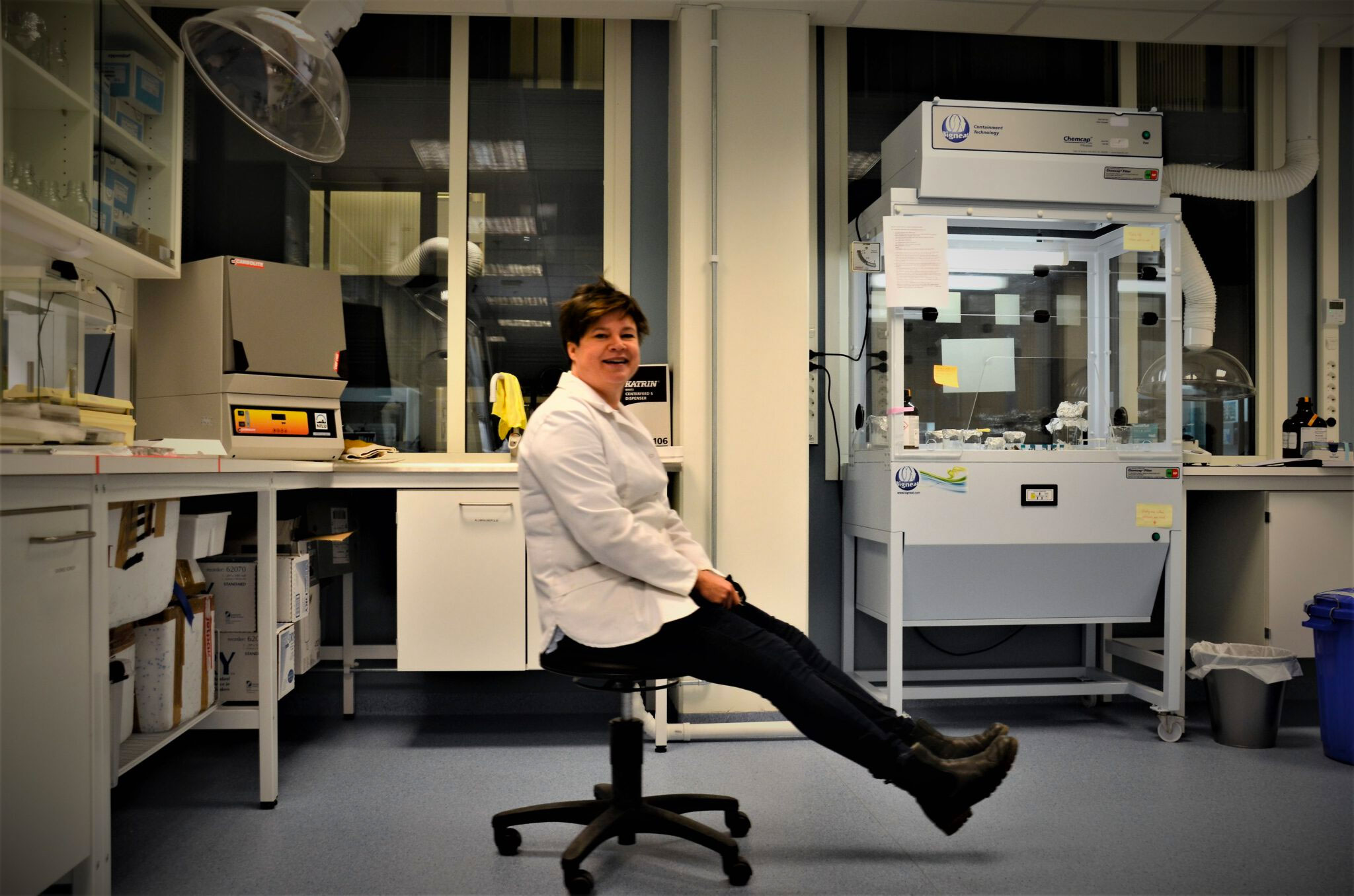
2.
Follow the rubber crumbs
Herzke’s focus at NILU is environmental toxins in humans, animals, air, water and products. Among other things, she is responsible for a project that aims to find new pollutants in biological materials from Arctic regions. Herzke was also active in the European CleanSea Project, which is focused on plastic waste in the ocean.
Over the past couple of years, she has also dedicated a lot of time to the “Check your artificial soccer turf” campaign (Sjekk kunstgressbanen). Herzke and her colleagues recruited 12 000 schoolchildren to help find out what happens to the 3 000 tonnes of so-called crumb rubber granulate that disappears from artificial soccer turf in Norway each year.
“The whole project was triggered by the fact that I walk past Gyllenborg School on my way to work every day. One day I saw two huge sacks of rubber granulate that would be used to replenish the artificial turf in the schoolyard.
I also noticed the storm drain just a few metres away from the turf. A few days later, the entire schoolyard was black; it was obvious that a lot of those tiny balls of rubber would soon end up in the storm sewer. And where does the water from the storm drains in Tromsø go? Straight into the sea, of course!”
According to Herzke, rubber granulate is often made from old car tyres. The researchers are now trying to find out what happens when these rubber granulate balls end up in the ocean.
“We asked schoolchildren all over Norway to help us get the best possible overview of the extent of this pollution. I find it very rewarding in working this way. It combines applied research with effective dissemination of knowledge.”
In all her projects, Dorte Herzke is fascinated by the complexity and interactions in the environment.
“What effects do environmental pollutants have where they are? How do they get there? And what do we need to do to make sure we don’t get even more of them? Everything is interconnected with everything else.”
«I also noticed the storm drain just a few metres away from the turf. A few days later, the entire schoolyard was black; it was obvious that a lot of those tiny balls of rubber would soon end up in the storm sewer. And where does the water from the storm drains in Tromsø go? Straight into the sea, of course!»
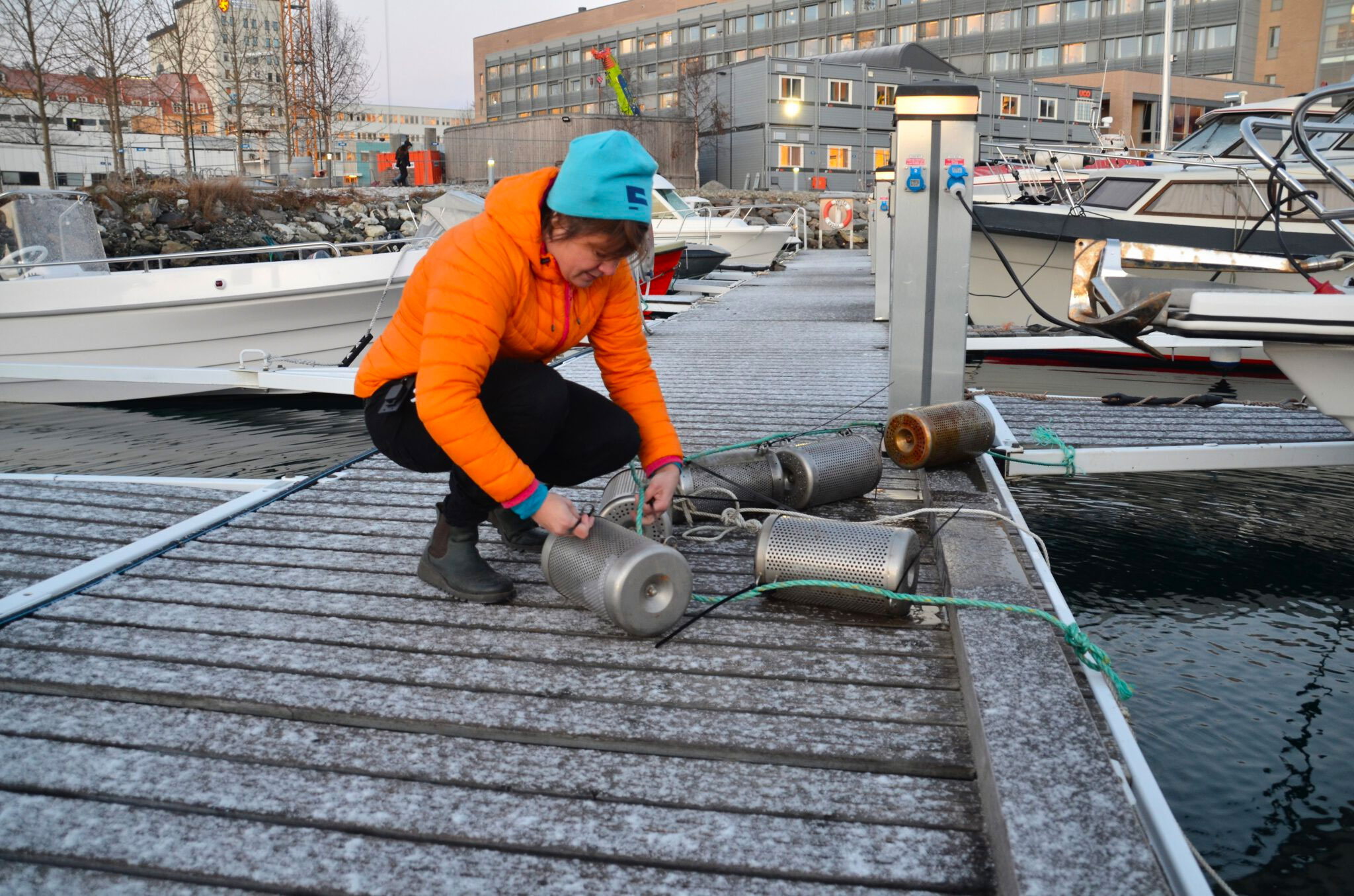
3.
Challenges in the Arctic
Most of the research done at NILU’s laboratory at the Fram Centre is focused on the Arctic. According to Herzke, this is both exciting and challenging, partly because the effects of pollution are especially noticeable in this region.
“There aren’t many big factories here, but we find a bunch of different pollutants here anyway – pollutants that come from other parts of the world. For example, look at the polar bear: it’s one of the world’s most poisoned animals. It’s astonishing that polar bears can have such high concentrations of pollutants in their bodies after eating nothing but seals and bird eggs – and never being anywhere near a factory. This is all our doing. Humans can choose what they eat; the polar bear can’t. All that poison in the polar bears – it’s our fault, not the bear’s.”
Herzke says it is important to acknowledge how great a factor human activity is in the amount of pollution in the Arctic.
“We continue to pollute the world, and this will have consequences for the health of our children and for the animals that live around us. We know a great deal about the effects of our actions, but we choose not to act accordingly. Sometimes it seems as if we are doing more of what shouldn’t do, not less of it.
“So what should we do?” asks Herzke, then answers her own question. “We need to live simpler lives. And we need to be smarter about how we use things, how products are manufactured, how we recycle and how we re-use the things we buy. We need to learn that nothing we throw away is ever gone.”
Herzke fears that in only twenty or thirty years, the air in nearly all the world’s metropolises will be as bad as it is now in Beijing and Mumbai. She is also afraid to even more people will lack access to clean drinking water and that our food will be full of harmful chemicals.
“If there’s one thing I hope to achieve as a researcher, it would be to figure out how we can live simpler lives and reverse this trend. Of course, much responsibility lies with politicians, but each and every one of us will have to do what we can. We can’t just sit and wait for someone else to decide how we should do things. It doesn’t work that way.”
“We continue to pollute the world, and this will have consequences for the health of our children and for the animals that live around us. We know a great deal about the effects of our actions, but we choose not to act accordingly. Sometimes it seems as if we are doing more of what shouldn’t be done, not less of it.»
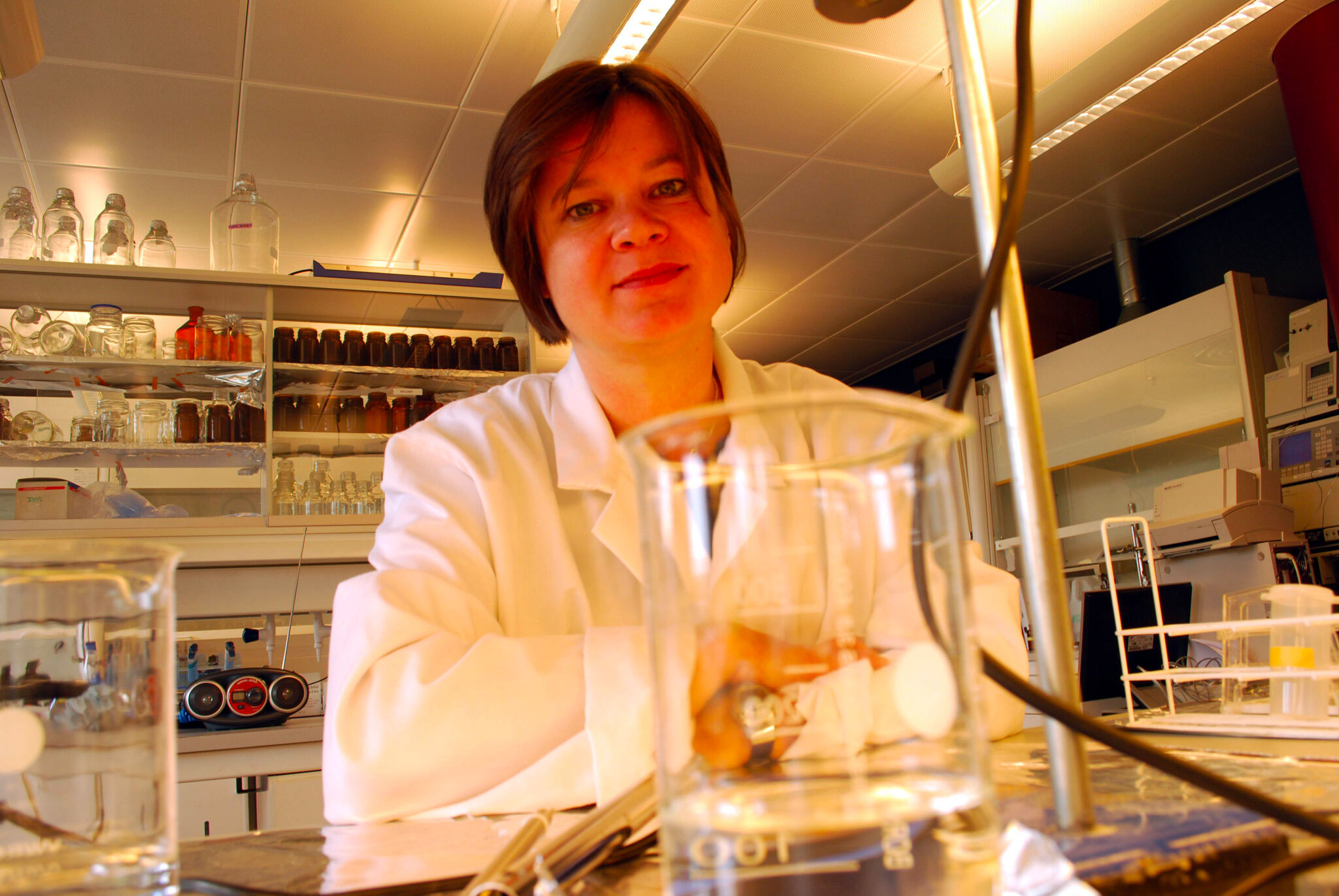
4.
Dark start
Herzke’s office is located on the third floor of Fram II, the Fram Centre’s new wing on the south side of the complex. People who work in these offices can expect visitors to drop by around noon on the first clear day after 15 January. In Tromsø, that’s when the sun peers over the southern horizon for the first time since late November, and those in south-facing offices have front-row seats. But today the sky is pitch black and a daylight lamp next to Dorte’s computer monitor is standing in for the sun. Despite having lived in Tromsø for two decades, she is still not a fan of the dark period. Some of her aversion might come from her first encounter with northern Norway.
“Before I got the job in Tromsø I had only been in Norway once, on a summer holiday in Valdres. When my husband and I loaded our car and left Berlin we didn’t really know what we had ahead of us.”
They decided to drive through Sweden and Finland and approach Norway via Kilpis.
“This was in early February. The temperature was 30 degrees below zero. And long stretches of that road are also extremely dark and deserted; only forest, forest, forest as far as the eye can see.”
This was before GPS, so they used a good old-fashioned map to find their way. But driving through Lavangsdalen and realising that they should only have a few dozen kilometres to go before reaching Tromsø, they began to wonder if they were on the right road.
“I admit I wondered a bit what we’d got ourselves into. The nights kept getting longer and darker, and the closer we got to our destination, the fewer people we saw. We were both relieved when we finally rounded the last curve and suddenly saw light and civilisation.”
Needless to say, the couple was welcomed with open arms and ultimately made themselves a new home here. But when Herzke thinks back on her first year in Tromsø, it is almost exclusively her work she remembers.
“It was a hectic period. I was very keen to find out about everything I would be doing and how to do it. There was a lot to learn, and I also had to learn a new language. I have vague recollections that it was horrible summer – it rained constantly – and that a huge amount of snow fell the following winter. But I didn’t give it much thought. It wasn’t until a year had gone by that I started exploring my surroundings. When I could finally breathe a little deeper, I began to enjoy nature and explore the city.”
Hike and deep thoughts
In addition to her exciting job, credit for keeping Herzke and her husband in Tromsø goes to the mountains, ski slopes and forests. They try to get out as often as they can with their two teenage daughters.
“I realised you have to love being outdoors if you want to thrive here. We made sure we learned to love it over time, though we’re not yet as accustomed to going out as Norwegians. We go skiing, but we go slowly. And we go alone.”
Outdoor excursions are great for thinking deep and thinking big. For Herzke, this may mean pondering new projects she might start at NILU.
“My interests seem to change all the time. Fortunately, I am in a position where I more or less create my own working situations. Since our work is based mostly on projects – and one of my responsibilities is precisely to create new projects – I tend to come up with suggestions that align with my interests. Of course, nobody funds my projects just because I think they would be fun to do. We have to apply for funding many times – and occasionally we get a green light.
“But no matter what I do, it’s important not to get too engrossed in a single topic. Everything is interconnected. We must never lose sight of that.”
This story is originally published in the Fram Forum


